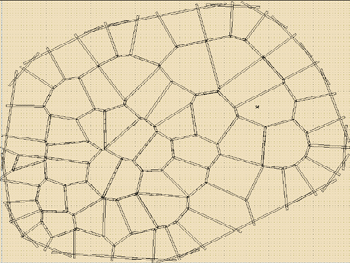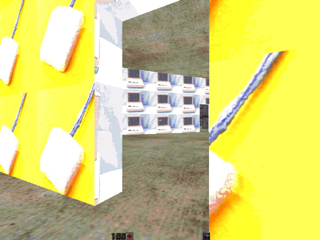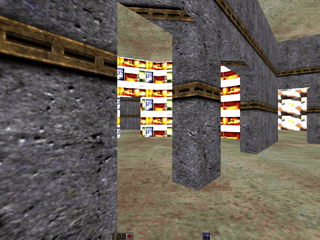Mapmaking
This applet demonstrates the process of turning a network structure into a physical map. The nodes are pages connected by links.
The links act as springs, drawing the graph into its lowest energy state, a configuration best suited to physical navigation.
The cells themselves are generated as a Voronoi diagram, bounded by a convex hull around the set of sites.
Try pulling on the nodes to see how the map reacts.
Some of this code is adapted from the Graph Layout applet by Sun Microsystems.
![]()
Navigation
These images demonstrate the navigation client.
Wall textures are taken from the content of the page, and doors to the other pages to which it links.
The image on the top is an plan view of the entire map.
Click here for a movie of a user navigating the Aesthetics + Computation website.
 |
||
 |
||
 |
||
 |
||
 |